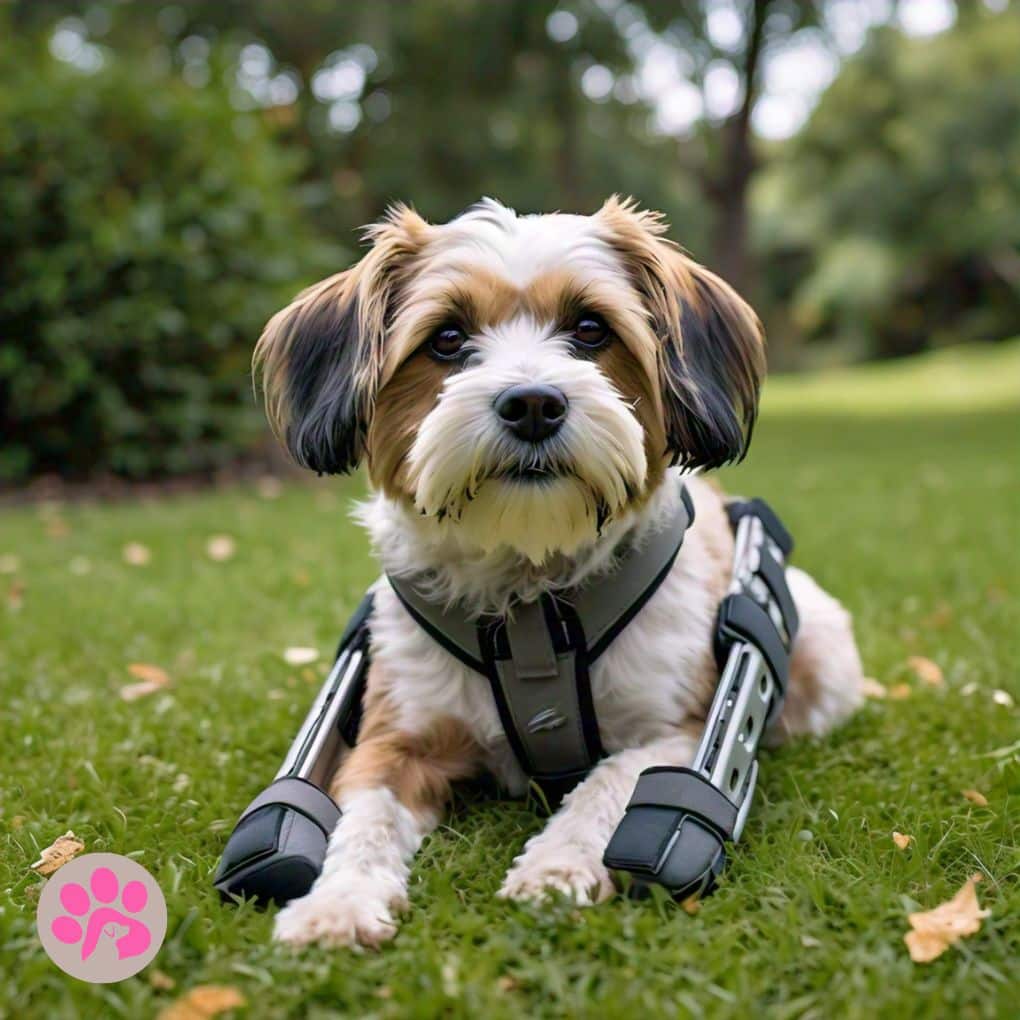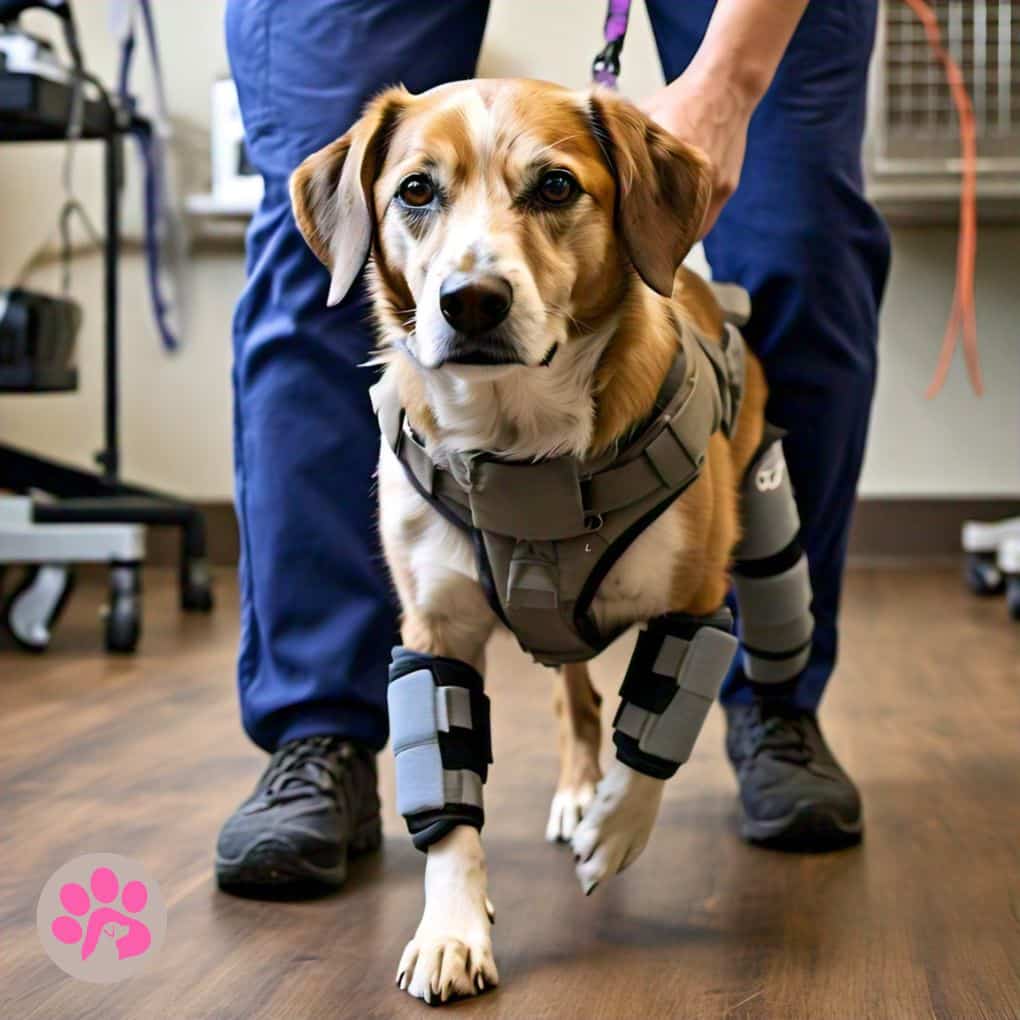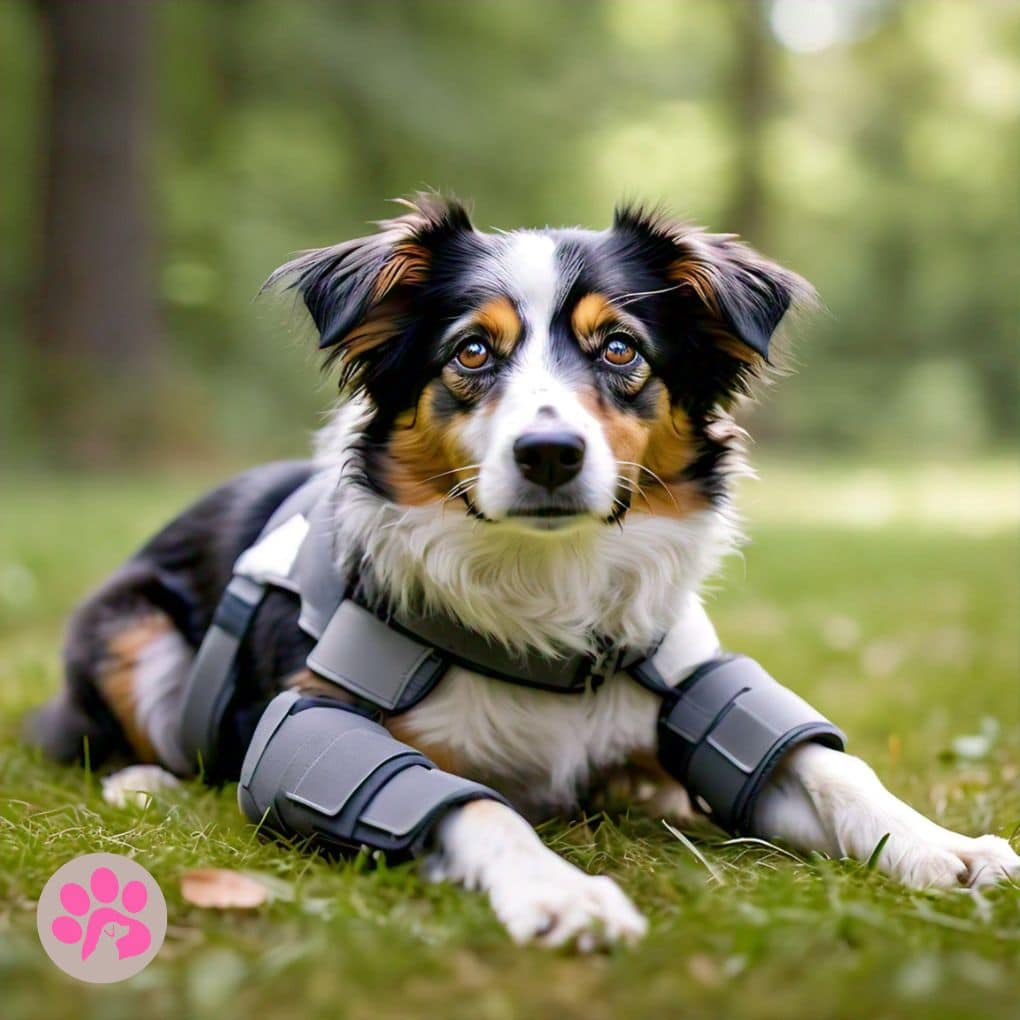You may be wondering if there is a way to help your furry friend get back on their feet if they’ve been moving a little more slowly lately. Maybe they’re limping after a fun day at the park or just having trouble jumping on the couch. Here comes the dog brace! These useful tools are made to give support and stability, and they can make a huge difference for dogs with accidents or joint problems. Imagine your dog running around with lots of energy and chasing their favorite ball like they did when they were a baby.
What is a dog brace?
A dog brace is a support device that is meant to keep an injured or weak leg, joint, or other part of the body stable and safe. Made from neoprene, elastic, or hard plastics, these braces come in a range of styles to meet different needs. For example, knee (CCL) braces, ankle supports, and more are all available.

Support:
By giving your muscles and joints extra support while you move, they stay stable. This is very helpful after surgery or an accident.
Pain Relief:
By keeping the person who wears them from moving too much, orthotics can ease the pain and suffering that come with conditions like arthritis and torn ligaments.
Rehabilitation Aid:
As part of a program to help dogs get stronger and more mobile after an accident, many vets suggest braces.
Preventative Measure:
Braces can sometimes be used to protect dogs doing high-impact sports, especially those that are more likely to get hurt.
Types of dog brace
Here are the main types of dog braces, each designed for specific injuries or conditions
- Knee Braces (Cranial Cruciate Ligament – CCL Braces)
- Ankle Braces
- Elbow Braces
- Wrist (Carpal) Braces.
- Hip Braces
- Full Leg Braces
- Stifle Braces
- Custom Braces
When to Use a dog brace
You now know when it might be a good idea to give your dog a brace. If your dog is walking like they just stepped on a Lego, this could help! If your dog has been hurt, like with torn tendons, sprained legs, or surgery, dog braces can help them get better. So old dogs with arthritis can keep chasing mice (or at least think about it).

These are great because they make them stronger. Picture your dog being excited and happy, jumping around without being scared. You should always talk to your doctor first, though. If your dog needs extra care, a dog brace might help them get going again.
How to Properly Fit and Use a dog brace
Just measure your dog’s leg where it hurts. When you put the brace on your dog’s leg, make sure it fits over the joint or area that needs support. Make the straps tight, but not too tight, so you don’t hurt your circulation or feel uncomfortable. Like shoes, tight is good as long as it doesn’t pinch!
Take your dog for a short walk to see how he acts after putting on the brace. Keep an eye on how busy and comfortable they are. If they are walking or getting annoyed, that could mean that something needs to be changed.
Caring for Your Dog While Using a dog brace
Your dog will get better faster if you take care of it while it’s in a collar. First, check to see if the brace is worn out and that it fits well. Change it if it doesn’t fit right. A little contact can make you feel bad. Next, look at how active they are. People need to move around, but don’t let them play too much in the first few weeks while they’re healing. High-impact activities like running or jumping must be okay with your vet. Short walks and trips to the bathroom are fine, though.

Do some light physical exercise! You can keep your muscles strong and flexible without doing too much with stretches and guided movements. Remember to be nice to your dog. They will feel safe and loved with gentle touches and words of comfort.
